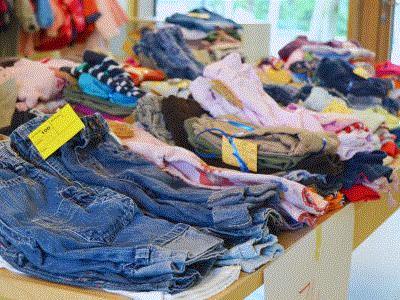Salary Survey Time
It’s Salary & Benefits Survey time, my friends. The good folks at GrowerTalks and Green Profit who have been offering up the survey for nearly three decades, are once again partnering up with AmericanHort to help make our survey even more useful for you. AmericanHort has brought in research firm Industry Insights, who are actual professionals at salary and other sorts of surveys, taking our humble questionnaire to the next—and more valuable—level.
“I’m too busy,” you say. You may be busy, but you always have time to learn how to better your business, right? Taking the survey and then reading its results in the December issue of GrowerTalks and January issue of Green Profit is exactly how you can better understand salary and benefit trends and how you compare to your survey-taking peers. The survey includes company demographics, staffing and benefits, and salary data on dozens of different job titles across full-time, part-time and seasonal employees.

Survey takers are also eligible to win a Yeti 45 cooler, and who doesn’t want one of those? CLICK HERE to fill out the survey (which is confidentially collected and maintained by Industry Insights’ professional data team and securely stored). The survey may be offered in conjunction with AmericanHort but you do not need to be a member to benefit from it. All survey respondents will get the full report prepared by Industry Insights. However, AmericanHort Premium member respondents will receive the Comparison Report at no cost.

Speaking of Workers …
Hourly retail workers are looking for or planning to look for new jobs. That’s according to the annual report on the hourly workforce from workforce management platform Legion, which polled 1,569 hourly workers and 557 managers in North America.
The survey asked hourly workers when they are most likely to look for a new job. The results:
-
10% of hourly employees said immediately
-
23% said in three to six months
-
17% said within the next 12 months
-
76% of those workers between the ages of 18-24 plan to leave their current jobs within the year.
The survey asked managers about their biggest challenges to retaining employees. Their responses included:
-
52% said not offering competitive pay
-
50% said inability to offer flexible scheduling
-
34% said lack of employee benefits
-
26% said early access to earned wages
The survey indicates that employers should pay a little more attention to what might make their employees stick around. For example, when asked if they agreed or disagreed with the statement “My employer had not done anything to make my workplace better,” 41% agreed. And the statement “My employer cares about creating a good work experience for me and my coworkers” had just 50% agreement, while 36% were neutral and 14% disagreed.
Thoughts? I know you have some! Tell me about it HERE.

Social Overtakes Google
I mentioned Gen Z above. Here’s something else you should know about this young demographic—they prefer to search social media platforms to glean information about brands, products and services over a search engine such as Google. In fact, 45% of those Gen Zs polled adhere to that preference, as compared to 10% of Baby Boomers, 20% of Gen X and 35% of Millennials. This is according to a survey conducted in April by Forbes Advisor and Talker Research.

The giant that it is, Google is taking action to stay relevant with Gen Z and those who follow. The Google team is investing in tech like augmented reality glasses that let users find information about what they are seeing. Also, Google is investing in its Ask Photos feature that lets folks ask about details in images.
Oh, and the top social site on which Gen Z is searching for information? TikTok. Read more about Gen Z and search engines HERE. And if you want to read a deep dive into the entire Forbes Advisor survey, read all about it HERE. It’s a long piece but packed with information about how all the generations are using search. Interesting stuff.

Consumer’s Thoughts on Lawn Fertilizer
I fail at fertilizing. Whether it’s houseplants, containers or my vegetable garden, I just can’t be bothered. And my lawn? Remembering my dad hand-casting granular fertilizer from a bucket and seeing the resulting green and yellow swaths really turned me off on the practice. Plus, who wants to fertilize weeds anyway?
Enough of my own lawn fertilizing experiences. Let’s examine how others are doing it and feeling about it. There’s a survey for that. Axiom recently released its 2024 Lawn Fertilizer Study, and the takeaway message is this: Homeowners are concerned about the safety of lawn fertilizers for children, pets, wildlife and the environment.

In fact, their concern has led 48% of the survey respondents to use or continue using natural and/or organic lawn fertilizers. In addition, 26% of them want to try that category of lawn fertilizer.
Other findings from the Axiom survey include:
-
70% are concerned or highly concerned about lawn fertilizers polluting lakes, streams and rivers.
-
62% are concerned about applications of lawn fertilizers and pesticides in nearby yards, parks, sports fields and golf courses.
-
51% natural and organic fertilizers that contain plant and animal nutrient sources like soybean meal and fish meal would make them feel safer.
-
61% prefer fertilizers made from the same ingredients as are in pet food or livestock feeds vs. 36% for manure and 4% for petrochemical ingredients.
-
60% see lawn protection chemicals as harmful to the environment, pets and humans.
-
67% report applying fertilizers containing weed killers and insecticides.
-
The top three reasons for not using natural pesticides on their lawns include: Doesn’t work (29%), didn’t do a good job (20%) and cost prohibitive (19%).
Looks like the potential market for natural/organic lawn care is a good one, right? And that last stat—that only 19% consider natural pesticides to be cost prohibitive—means most homeowners don’t see a price barrier. They just need to see a better result when used in their yards, along with reasons for why these products are generally better for people/pets/the environment (so drop the perfectionist lawn expectations).
Here’s some other good news—the survey found that the top two most credible information sources for natural fertilizers are independent garden centers (54%) and university extension/county agents (44%). That tells me folks are willing to seek out information and to learn.
Read the report for yourself HERE.

Social Retreat
Social Retreat is the second of eight trends that appear on Garden Media Group’s 2025 Garden Trends Report. You’ll recall I began a listing and explanation of each trend last week, starting with Holy Moly, or the growing popularity of plants with Swiss cheese-like openings. This week’s trend touches on the pressures associated with social connectivity. In short, it’s too much.

What with all the ads, click bait, toxic comments and potentially non-human interactions, a growing number of us are checking out. The Garden Trends Report indicates that 50% of social media users will dramatically reduce their interactions on socials in the next year and instead return to authentic connections.
That doesn’t mean not being online. People will find real connections in niche social communities instead. These communities are more focused on specific interests where people can connect over shared interests.
But that doesn’t mean it’s only community building. Sales can develop from these communities, too. The Trends Report indicated that 73% of consumers are more likely to purchase and engage with brands when they feel a part of dedicated communities. And it’s not superficial on the part of the brand or company, either. The engagement is driven by genuine interest and quality interactions of the entire community.
Here are a few keys to creating and engaging in niche communities:
-
Know who you are engaging with.
-
Create high-quality content that educates, entertains and resonates.
-
Offer solutions and insights.
-
Ditch marketing speak.
-
Participate in conversations and answer questions.
-
Don’t sell.
Meet me back here next week for a third trend on GMG’s 2025 Garden Trends Report, or download them for yourself HERE.

Resale Reels in Customers
I’m back with the third of five of FedEx’s shopping behaviors that are driving in-store traffic. This one is Second-Hand Commerce Appeals to Cost- and Eco-Conscious Customers. The resale market has been hot the last several years. Why? Well, resale/used/secondhand items are typically more affordable. There’s also the sustainability consideration, which is important for a certain segment of consumers.
The online resale market has been especially active. The FedEx report found that nearly half of digital shoppers bought used products in 2023—and that includes from big name brands such as Lululemon, Kate Spade and Patagonia. In 2022, resale apparel accounted for one in three of all items sold. And here’s an interesting stat: 64% of Gen Z now looks to the secondhand market before searching new products.
What about the in-store market for resale? The FedEx report found that two in three retailers believe resale will be integral for their long-term growth. They also predict that by 2027, resale growth is expected to surpass the broader retail clothing sector by 900%. High-end brands are betting that their resale items are a great way to introduce their products to customers who would not pay full price.

Imagine a secondhand section in your store, but with pots, accessories and such!
How would this work for you? Encourage customers to bring in “gently used” pottery, tools—or even plants?—for a store discount on something new, and then resell those items to your price-conscious customers.
Think it’ll work? Doing something similar? Have ideas for how to implement resale? Drop me a note about it HERE.

Give a Little, Get a Lot
Did you know that each year upwards of 800 programs apply for Kid’s Gardening’s Youth Garden Grant? These grants can fund just 50 or so programs. That’s a lot of programs—and a lot of children—going without the resources they need to either begin or maintain youth-focused gardens.

Since 1982, the Youth Garden Grant has been able to fund youth gardens, and in doing so empower young minds through their gardening. This not only teaches them about gardening and encourages them to carry on the activity into adulthood, but is also brings joy, helps them learn and introduces them to healthier lifestyles.
“A rising tide lifts all boats,” one of my favorite aphorisms, totally applies here. If we all give a few dollars—pocket change, really—then most or even all of those yearly applicants will be able to receive funding. Giving a little water now will buoy your business in the future.
If you have it in you, chip in $5 to support the Youth Garden Grant today. Do so HERE.








Questions, comments, suggestions? Drop me a line if you'd like at ewells@ballpublishing.com.

Ellen Wells
Senior Editor
Green Profit
This week's BuZZ! was sent to 27,617 loyal readers!
If you're interested in advertising on BuZZ! contact Kim Brown ASAP!